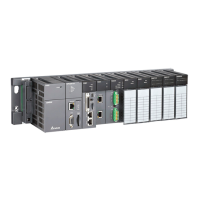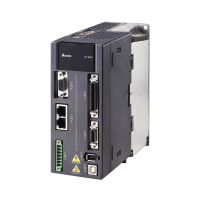Chapter 6 Applied Instructions
6-483
b15
b0
b7 b8
0016#
D0
D1
D2
16#
41(A)
16#42(B)
43(C)16# 44(D)16#
46(F)16#
45(E)16#
D3
b15
b0
b7 b8
16#31(1) 32(2)16#
33(3)16# 34(4)16#
35(5)16#
36(6)16#
D11
3
4
38(8)16#
37(7)16#
0016#
b15
b0
b7 b8
0016#
16#31(1) 32(2)16#
38(8)16#
37(7)16#
D10
D100
D101
D102
D103
D104
D100
D101
D102
D103
D104
16#41(A)
42(B)16#
43(C)16# 44(D)16#
After the instruction is executed
Initial character in D which is replaced
Number of characters which
are retrieved from S1
Additional remark:
1. If the string in S
1
does not end with 16#00, SM0 is ON, and the error code in SR0 is 16#200E.
2. If the string in D does not end with 16#00, SM0 is ON, and the error code in SR0 is 16#2003.
3. If the value in S
2
is less than or equal to 0, or if the value in S
2
is larger than the length of the
string in D, SM0 is ON, and the error code in SR0 is 16#2003.
4. If the value in S
2
+1 is less than -1, or if the value in S
2
+1 is larger than the number of
characters which can be retrieved from the string in S
1
, SM0 is ON, and the error code in SR0
is 16#2003.
5. If the operand S
2
used during the execution of the 16-bit instruction is declared in ISPSoft, the
data type will be ARRAY [2] of WORD/INT.

